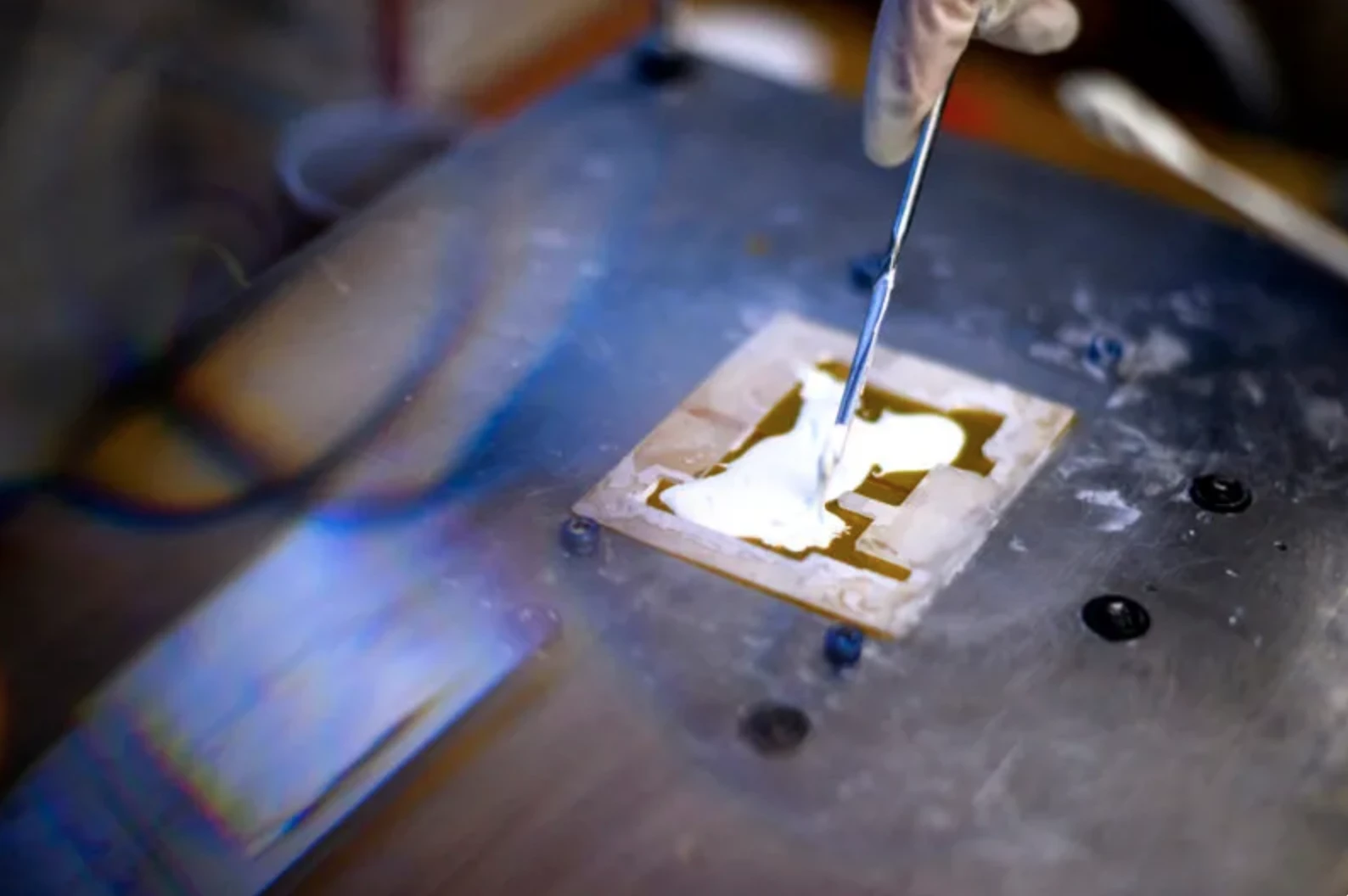In what they hail as a “new frontier in materials,” engineers at Northeastern University have developed a new type of ceramic that can be fashioned into thin and complex shapes, opening up expansive new applications in electronics. Described as thermoformable ceramics, the novel materials came about through a laboratory accident, but could serve as more efficient and durable heat sinks, among other possibilities.
The authors of the study were playing around with experimental boron-based ceramic compounds for potential industrial applications last year, and had seemingly pushed the material to breaking point.
“We blasted it with a blowtorch and, while we were loading it, it unexpectedly deformed and fell out of the fixture,” Randall Erb, a professor of mechanical and industrial engineering at Northeastern. “We looked at the sample on the floor thinking that it was a failure. We realized it was perfectly intact. It was just shaped differently. We tried it a few more times and realized that we could control the deformation. And then we started compression-molding the material and found that it was a very fast process.”
The behavior of the material ran counter to conventional wisdom around how ceramics are formed and what they’re able to endure. When subjected to extreme changes in temperature, these materials will likely crack or shatter, but the team was literally able to apply a blow torch and keep them in one piece.
“It’s unique: Thermoformable ceramics, from what we’ve seen and read, don’t really exist,” said study author Jason Bice. “So it’s a new frontier in materials.”

Further examination of the materials revealed an underlying microstructure that enables them to rapidly transmit heat. During molding and thermoforming, a process that typically applies to thermoplastic polymers and sheet metals, the team found the ceramic could be fashioned into complex geometries, while maintaining good mechanical strength and thermal conductivity.
Also working in its favor, so far as applications in electronics are concerned, is the fact the material doesn’t transport electrons or interfere with radio frequencies (RF). In smartphones and other devices, a thick layer of aluminum is used to pull heat away. But with its set of properties, and an ability to be less than a millimeter thick and conformed to different surfaces, the team sees the ceramic material serving as a more effective heat sink.
“If you put an aluminum heatsink into an RF component, you’ve basically introduced a series of antennae to interact with the RF signal,” Erb says. “Instead, we can put our boron nitride-based material in and around an RF component and it is essentially invisible to the RF signal.”
The scientists have received a grant to continue developing the technology and are now pursuing commercialization through a spin-off company called Fourier.
The research was published in the journal Advanced Materials.
Source: Northeastern University





